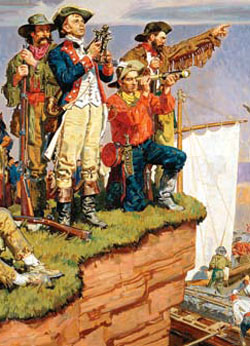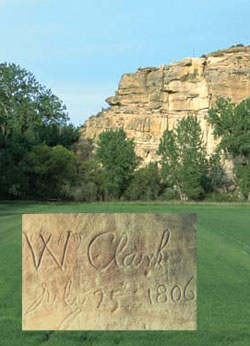Montana: Stories of the Land
Companion Website and Online Teacher's Guide
Chapter 4 - Newcomers Explore the Region, 1742-1827
Chapter 1 - Montana: Where the Land Writes History
Chapter 2 - People of the Dog Days
Chapter 3 - From Dog Days to Horse Warriors
Chapter 4 - Newcomers Explore the Region
Chapter 5 - Beaver, Bison, and Black Robes
Chapter 6 - Montana's Gold and Silver Boom
Chapter 7 - Two Worlds Collide
Chapter 8 - Livestock and the Open Range
Chapter 9 - Railroads Link Montana to the Nation
Chapter 10 - Politics and the Copper Kings
Chapter 11 - The Early Reservation Years
Chapter 12 - Logging in the "High Lonesome"
Chapter 13 - Homesteading This Dry Land
Chapter 14 - Towns Have Lives, Too
Chapter 15 - Progressive Montana
Chapter 16 - Montana and World War I
Chapter 17 - Montanans on the Move
Chapter 18 - The Great Depression Transforms Montana
Chapter 19 - World War II in Montana
Chapter 20 - Building a New Montana
Chapter 21 - A People's Constitution
Chapter 22 - Living in a New Montana
Learning From Historical Documents
Thomas Jefferson to Meriwether Lewis, July 6, 1803. Jefferson Letter. Montana Historical Society Archives. Excerpted in Not In Precious Metals Alone: A Manuscript History of Montana (Helena, 1976): 4.
Context for Thomas Jefferson's Letter:
On May 14, 1804, Meriwether Lewis and William Clark and their small "corps of discovery" set forth up the Missouri River to explore the vast Louisiana Territory. Although an expedition to explore the West and establish a trade route to the Pacific had long been a dream of Thomas Jefferson, purchase of the territory from France in 1803 made the expedition to establish the limits of the new American empire a necessity. President Jefferson was fully aware that he was sending the men to face unknown dangers. Thus, before the expedition departed, he penned a letter of international credit to be used in the event that the party had to return by a different route, possibly by sea and possibly at the whim of a foreign government.
-
Complete a Written Document Analysis Worksheet.
About Primary Sources:
Letters, diary entries, census records, newspapers, and photographs are all examples of "primary sources," material created at a particular moment in the past that has survived into the present. Primary sources can provide clues to the past. They are our windows into an earlier time. The Montana Historical Society contains thousands of primary sources. In the 1970s, archivists collected just a few snippets into a book, which they called Not In Precious Metals Alone: A Manuscript History of Montana. The above sample from that book relates directly to this chapter.
 Detail, Lewis and Clark Expedition in 1804, Dean Cornwell, Montana Historical Society Museum
Detail, Lewis and Clark Expedition in 1804, Dean Cornwell, Montana Historical Society Museum Pompey's Pillar and inset of W. A. Clark signature on the pillar, courtesy Bureau of Land Management, Billings
Pompey's Pillar and inset of W. A. Clark signature on the pillar, courtesy Bureau of Land Management, Billings